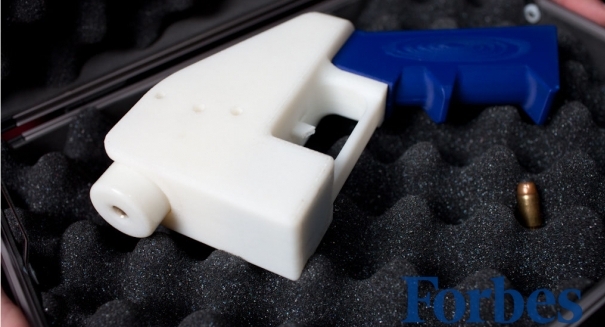
How should lawmakers regulate this new type of firearm?
Forbes reports that 25-year-old University of Texas law student Cody Wilson, the founder of Defense Distributed, has developed what his company says is the world’s first 3D-printed handgun. The only non-plastic part of the handgun is a small nail that acts as a firing pen.
Though it may not look pretty, “the Liberator” can fire real bullets and has an interchangeable barrels for varying calibers of ammunition. According to Defense Distributed’s website, the company’s primary goal is “to publish and distribute, at no cost to the public…information and knowledge related to the 3D printing of arms.”
Once the Liberator has been thoroughly tested, Defense Distributed will make the 3D-printable CAD files for the handgun available online. According to Forbes, Defense Distributed obtained a federal firearms license in March, making the company a legal gun manufacturer.
News of the world’s first 3D-printed handgun isn’t being taken lightly by lawmakers who are pushing for tougher gun control measures. In response to Wilson’s announcement, New York Congressman Steve Israel (D-Huntington) issued a statement calling for an extension of the Undetectable Firearms Act, as well as clauses dealing specifically with 3D-printed gun parts.
Rep. Israel is one of several lawmakers concerned with the undetectable nature of a plastic gun. However, Forbes says that Defense Distributed places a six-ounce piece of steel into the body of their 3D-printed handgun to ensure that it can be detected by metal detectors. An all plastic firearm would violate the 1988 Undetectable Firearms Act.
“Security checkpoints, background checks, and gun regulations will do little good if criminals can print plastic firearms at home and bring those firearms through metal detectors with no one the wiser,” Rep. Israel wrote in a statement released in response to the Forbes article on the world’s first 3D-printed handgun. “When I started talking about the issue of plastic firearms months ago, I was told the idea of a plastic gun is science-fiction. Now that this technology appears to be upon us, we need to act now to extend the ban on plastic firearms.”
One of the chief criticisms of 3D-printed handguns is that when Wilson releases the 3D-printable CAD files for the Liberator, there will be a lot of people who will print the gun without following the rules. Furthermore, the Register notes that there’s nothing in the design of the Liberator that makes the metal component necessary.
While Staples will soon be the first major retailer to offer a 3D printer to consumers, it is unclear whether the Cube 3D Printer from 3D Systems can actually print the components that make up the Liberator. A product description, however, notes that “the standard Cube printer can produce objects up to 5.5 inches square, while the CubeX can print larger designs up to the size of a basketball.”
Should individuals wishing to download 3D-printable CAD files of the Liberator be subjected to a background check? How should lawmakers regulate this new type of firearm? Share your thoughts in the comments section.
Leave a Reply